
Map, Bahuaja Sonene National Park, Grasshopper Mimicking a Wasp. Photo by: David Johnston.
Research and exploration in the Neotropics are extraordinary, life-changing experiences. In the past two decades, a new generation of collaborative projects has emerged throughout Central and South America to provide access to tropical biodiversity. Scientists, local naturalists, guides, students and travelers now have the chance to mingle and share knowledge. Fusion programs offering immersion in tropical biology, travel, ecological field work, and adventure often support local wilderness preservation, inspire and educate visitors.
Since its inception in 1997, Fauna Forever Tambopata has been among these projects. Managed by the Asociacion Fauna Forever, a small not-for-profit conservation group based out of the Amazonian frontier town of Puerto Maldonado in Peru (a short hop east of Cusco and the famed Inca ruins of Machu Picchu), the project has been actively monitoring the changing state of nature and human activities in Tambopata, with an emphasis on areas in and around the Tambopata National Reserve and Bahuaja Sonene National Park. A microcosm of the greater Amazon ecosystem, the area is also famous for its wildlife and cultural diversity.
INTERVIEW WITH CHRIS KIRKYB OF FAUNA FOREVER

Puerto Maldonado, The Continental Bridge as Viewed from the Madre de Dios River. Photo by: David Johnston.
Mongabay: Fauna Forever Tambopata has access to an impressive extent of preserved forest—what are the key features of the region accessible to visitors and some of the commonly-seen creatures?
Chris Kirkby: The protected Tambopata rainforest, namely the Tambopata National reserve (0.3 million hectares, established in 2000) and neighboring Bahuaja Sonene National Park (1.1 million hectares, established in 1998), is well known among both the conservation and ecotourism communities for its large tracts of intact forest and high levels of species diversity. Indeed the Madre de Dios province where Tambopata is located, and by association the gateway city of Puerto Maldonado through which all visitors must pass on route to the many lodges, homestays, and research stations that have sprung up amongst the trees, was officially recognized back in the sleepy 1990s as the Biodiversity Capital of Peru. Today, the streets of Puerto Maldonado or PEM (the code for the city’s airport) as many of us call it, are rather over-run with murderous motorbikes; a shiny-new, bright-orange-eye-sore of a suspension bridge towers over the palm-fringed central plaza, and the sewage from its population of 100,000 drains untreated into the Madre de Dios River—one of the upper tributaries of the mighty Amazon. Despite these rather typical characteristics of a fast-developing Amazonian city, the last time I was standing atop the Biodiversity Obelisk, the tallest building in town, I could still clearly see the leafy tops of giant Iron-wood (Dipteryx) trees on the very edge of the reserve near Lake Sandoval, forever protected from would-be timber barons (who’d give anything to convert them into expensive parquet flooring) thanks to the daily to-and-fro of ecotourists that marvel at their height and millennial age.
Hoatzin (Opisthocomus hoazin), Giant River Otter (Pteronura brasiliensis)- Photo by Rob Williams, Colorado Clay-lick. Photo by: David Johnston.
Six-foot-long Giant river otters, hooligan-looking Hoatzin (chicken-sized, leaf-fermenting birds), and deceptively log-like Black caiman (a type of alligator) all find a secure home in the many oxbow lakes within the reserve, such as the aforementioned Lake Sandoval. Invisible but respected lines run across these bean-shaped lakes, creating no-paddle (out-of-bounds) areas, set-up in reply to the impacts of previously over-zealous tour guides who used to pursue wildlife to get their tourists close enough for the photograph, allowing much of the wildlife now to be viewed on their own terms. Tambopata also has some of the most spectacular parrot and macaw clay-licks going. Locally referred to as colpas, these exposed river cliffs which are high in clay-bound sodium attract multiple bird species and hundreds (sometimes thousands) of individuals on a daily basis, with peak activity recorded between August and February. This noisy and colorful wildlife spectacle is certainly not to be missed. Tambopata’s birdlife is particularly diverse, with 650+ species recorded to date (and climbing), making the forests, swamps and waterways here a highlight for birdwatchers. My favorite birds are the small but colorful Band-tailed manakin, Crested oropendolas, and Green-and-gold tanagers, basically anything with a hint of yellow on it! A night walk along a forest trail will also reveal Rainbow boa, Phyllomedusa tree frogs, Chicken spiders (aka big, hairy tarantulas), and without a doubt a troop of hooting, inquisitive Night monkeys. Tambopata is home to eight (arguably nine) species of monkey and many are easy to see, or hear in the case of the Red howlers. What’s more, the plethora of biologists and local guides with in-depth knowledge of the local flora and fauna also means any visitor to Tambopata is but a hop-and-a-question away from learning something new and interesting from a resident expert.

Rainbow Boa (Epicrates cenchria, Peruvian Night Monkey (Aotus miconax), Brown Capuchin (Cebus paella). Photo by: David Johnston.
Mongabay: The success or failure of ecotourism in Neotropical regions varies tremendously from place to place—what do you feel is the overall impact of ecotourism in your area? How does ecotourism compare with many of the other common land uses in your region?
Chris Kirkby: Ecotourism has been hugely successful in this part of the Neotropics, from an economic, environmental and social perspective. Annual ecotourism spending associated with Tambopata is estimated today at US$16 million (though would have been greater if not for the Great Recession). In large part this is due to a synergistic combination of decisions and actions over a 30-year period, as well as fortunate geography, and the parallel evolution of protected areas. The initial risk-taking and foresight of Peruvian investors, some of whom built the first rustic lodges in Tambopata back in the mid 1970s, gave the destination a head start over many other rainforest destinations in terms of word-of-mouth marketing, and was undoubtedly important from a proof-of-concept point of view – as many others followed suit later. The relatively close proximity of Puerto Maldonado (Tambopata’s gateway city) to Machu Picchu and Cusco, the crown jewels of Peru’s culture-heavy tourism industry which are a mere 30-minute flight away, meant accessing Tambopata’s rainforest was and remains relatively easy for the vast majority of visitors to Peru.

Machu Picchu, Andes Mountain Peaks as Seen from Tambopata on a Clear Morning. Photo by: David Johnston.
Mean annual profit margins for lodges are currently in excess of US$100,000, equivalent to US$250 per hectare of ecotourism-controlled forest. This profit-driven motive has been behind the efforts of ecotourism operators and their allies to lobby the Peruvian government to establish and maintain large state-managed protected areas, and subsequently (after a change in the law) the purchase and active protection by operators of privately-managed forest concessions (i.e. private reserves), has provided a guaranteed source of wildlife-rich forest and generated a de facto protective cushion around large parts of the reserve.
The growth in ecotourist numbers since the mid-1990s, and the early establishment of entrance and ecotourism-concession fees, has led to increased revenues for the reserve, money that is funding an increasing number of rangers, ranger training courses, patrols, and the building of new ranger stations. Furthermore, the active interest amongst many ecotourism operators and investors in partnering with locals (largely to control land and thus ecotourism resources), and the subsequent benefits in terms of profit-sharing, salaried income, know-how, and contacts for locals, in conjunction with new cohorts of ecotourism and business administration graduates that now flow annually from universities in Puerto Maldonado, has led recently to a flowering of locally-owned homestay enterprises and travel agencies. These are now gearing up to receive the backpackers and more socio-culturally interested visitors whose numbers are increasing fast as a consequence of the new Interoceanic Highway which has opened up a cheap over-land route to Puerto Maldonado from Cusco and Puno.

El Gato Homestay and Organic Farm in the Baltimore Community. Photo by: David Johnston.
From an environmental perspective, Fauna Forever and others have found that the flow of ecotourists along the waterways and hundreds of kilometers of forest trails in Tambopata, have had relatively little long-term impacts on resident wildlife—though significant efforts have already been expended on trying to minimize potential impacts (such as the designated no-go areas on lakes), establishing low-impact guidelines to manage visitor and tour guide behaviour, and certifying operators as an incentive to comply. The few species that we have found to be sensitive to the presence of ecotourists in their habitat are those that are sought after by hunters and in locations where hunting is still taking place or has recently ceased, namely large Cracid birds (turkey-like guans and curassows). These species are clearly scarcer in tourist-use areas as compared to non-use areas nearby, and have yet (and maybe never will) become habituated to the presence of people armed with cameras as opposed to shot guns. We are still investigating the dynamics of large predator populations, such as jaguar and puma, using footprint trap and remote camera studies, results of which we hope to have and publish soon, but it is encouraging to know that such cat species are still frequently seen along the Tambopata River.

A Howler Monkey (Alouatta sara) Sits in View of a Lodge Dining Area, A Tayra (Eira barbara) Wanders Down a Tourist Trail. Photo by: David Johnston.
Ecotourism as a means of making a decent and honest livelihood by sustainably using intact forest and incorporating select socio-cultural attractions is a lesson in long-term planning, execution, and learning from one’s successes and mistakes and those of the competition. If the fundamentals of designing and operating a good set of products, and marketing them efficiently to a segment of the ecotourism market, whilst keeping visitor satisfaction high and costs under control, and with an ability (in terms of access to more capital) to ride out the inevitable troughs that occasionally afflict a tourism business, such as the arrival of a new competitor or political/economic instability at local, national, and international levels, then payback can be handsome after 5-10 years. However, waiting this long is not possible for everyone, and besides it takes a certain degree of education, capital (money) and know-how to achieve, not to mention internal fortitude (call it stubbornness if you will), and some luck to make ecotourism work fully for you.
The payback for most other activities by contrast is measured in months rather than years, but largely at the expense of the environment and future generations. At present, for instance, an estimated fifteen tonnes of gold are extracted annually from ancient sediments in the rivers, lakes and from under the forest itself by 20,000+ artisanal miners that together reap annual revenues in excess of US$200 million. However, three times as much tonnage in mercury is used in the gold-extraction process, most of which ends up poisoning the environment not to mention the miners and their families. Most of the people involved in gold mining are recent immigrants and seasonal workers and have at best a tenuous link to the lands they work. Most just aim to make a quick buck and then head back home or to the increasingly affluent cities in the Andes and along the coast. There is little incentive for them to minimize their impacts here, and the government has been largely ineffectual in forcing them into line in an attempt to reduce the current and future risks to the region’s society. The working conditions in the mining camps for the average worker are also pretty grim from a health-and-safety perspective, and human-rights violations in the form of indentured or forced labour, not to mention under-aged prostitution, appear weekly in the local press. The un-quantified value of negative externalities (as economists call the negative repercussions of economic activities such as environmental degradation and declines in human health), as a counter balance to the profits being made, is rarely considered by government officials when it comes to deciding on whether or not to control mining operations here. Corruption and graft is also playing a major role. That mining and virtually every other land use in Tambopata are incompatible is more than obvious. Farmers to ecotourism operators have been avidly trying to repulse this activity in multiple areas, with varying results. Ecotourism operators have been more successful due to the economic and political clout that some of them now wield.
Agriculture and cattle ranching are increasingly profitable activities today as immigration and gold-mining drive up the demand for and therefore the price of food. Profitable agriculture and ranching however tend to be restricted to areas easily accessible by roads and major rivers, and indeed it is forest close to these that is experiencing the highest rates of conversion. Large-scale agriculture and ranching is incompatible with ecotourism, and operators have been active in buying out local farmsteads within visual distance of their lodges and trail systems to reduce the eye-saw risks from nearby deforestation.

Deforestation for Cattle Ranching along the Interoceanic Highway towards Brazil. Photo by: David Johnston.
In addition, exporting Brazil-nuts collected from the forest is a major though seasonal activity for many locals. There are over 800 Brazil-nut forest concessions in the Madre de Dios province, one hundred of which are to be found within the reserve itself, and partly overlap with ecotourism-use areas. With a mean area of 900 hectares each, an estimated 1% of the World Brazil-nut supply comes from the reserve, some of which is officially certified sustainable and organic. Profit margins from Brazil-nut extraction however are relatively low, typically US$2,000-6,000 or US$3-8 per hectare, and fluctuate wildly from year to year. Some Brazil-nut collectors with concessions in the reserve are already planning to dive into the ecotourism sector as a means of filling the economic gaps during the Brazil-nut off season.
Overall, I believe the strengthening economic ties between ecotourism and Tambopata’s protected areas, as well as the geographical positioning of today’s ecotourism-controlled lands, will, in time, provide an effective buffer to the deforestation and degradation threats from other activities such as timber extraction, placer gold mining, agriculture, cattle ranching, and bushmeat hunting—all of which are increasing in intensity in many areas as the human population clicks upwards.
Mongabay: In many areas designated as wildlife reserves, illegal hunting and collection remain troublesome issues. What are the poaching issues you commonly encounter and what sorts of solutions are you exploring?
Chris Kirkby: With respect to bushmeat hunting, which can seriously affect the larger, meatier mammal and bird species such as Tapir, Brocket deer, and Curassow, if not managed, we have both good and not so good news here in Tambopata.
Firstly, it must be understood that the “National reserve” designation allows for a number of extractive activities to take place inside (hunting included), as long as they are regulated by a management plan, monitored periodically, and updated as required so as not to compromise the objectives of the protected area. Historical extractive rights are also largely maintained and are frequently negotiated prior to gazetting, as was the case in Tambopata. Here, the principal objectives of the Tambopata National reserve are to maintain (and in some cases re-establish) ecosystem processes and functions whilst providing research and educational opportunities and contributing to sustainable livelihoods for a number of social and economic groups, most of whom have a historical claim to natural and cultural resources in the area.
When the reserve was gazetted back in 2000, a number of areas within the reserve were already devoid of Peruvian spider monkeys, as a result of years of previous uncontrolled hunting and the extreme sensitivity of this species to even low levels of hunting pressure.
There are three main groups who maintain a bushmeat interest in certain areas of the reserve. The first are the native Ese’eje people, who live in three communities located on the borders of the reserve (with a combined population of 750), who have been hunting in Tambopata’s forests for hundreds if not thousands of years. The second group are Brazil-nut collectors, who own concessions within the reserve and who have successfully lobbied to be allowed to continue hunting a select number of species during the 3-month Brazil-nut collecting season, in order to reduce their need to buy and transport meat from Puerto Maldonado to their Brazil-nut camps. And the third are the mestizo/ribereño farmers, whose private land holdings also back onto the reserve and who have been undertaking hunting forays into what is now the reserve since before it was established. In addition, it’s worth mentioning that there have been attempts by unscrupulous trophy hunters to enter the ecotourism-use areas of the reserve, but to date such forays have been squarely repulsed by ecotourism operators with very few animals having been killed.
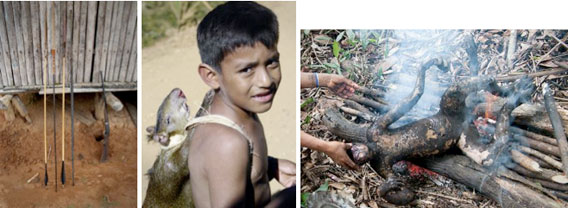
Traditional Bows and Arrows from a Peruvian Indigenous Community Next to a Shotgun, A Boy from the Infierno Community Walks Home from Hunting with an Agouti on his Back, Spider Monkey Being Cooked Over an Outdoor Fire.. Photo by: David Johnston.
Now that the Ese’eja use improved hunting technology, that is to say shotguns instead of bows and bamboo-tipped arrows they would have used before, their kill rate is up. Furthermore, and the real crux of the issue is that they prefer eating bushmeat to rearing large domestic animals (cows and pigs), they provide meat not only for their own families and communities but also for sale to others in and around Puerto Maldonado, and they are still largely disinclined to agree a hunting management plan with reserve personnel (for political and strategic reasons). For Brazil-nut collectors, for whom management plans exist that list the species and permitted off-take rates, there are strong economic incentives to breach off-take rates and due lax enforcement breaches are virtually costless. That natives and Brazil-nut collectors use the same general area of the reserve is problematic. Indeed, our data (from 1999 to the present day) shows that hunted wildlife populations in this area are declining fast. However, for areas where farmers were once dominant, before they began migrating into Puerto Maldonado in search of better education, health services, and job prospects for themselves and their families, wildlife population data show that hunted species are now on the comeback.
So, in Tambopata it’s six of one and half a dozen of the other in terms of the bushmeat hunting problem. The challenge we are dealing with today is (1) identifying a sustainable hunting level to promote; and (2) convincing two types of wildlife users (natives and Brazil-nut collectors alike), who have economic and cultural incentives at present to over-hunt and who up to now have rarely if ever discussed the topic together, to agree the terms of an improved hunting management plan which will undoubtedly restrict their off-take for a time. It’s a “Tragedy of the Commons” problem, solvable perhaps by reviving older systems of game management practices used by natives in the past, more effective on-site regulation, and helping some people within these groups to achieve their personal ecotourism development aims—which may reduce the time available for hunting and change the incentive from extraction for consumption to conservation for viewing.
With regards to the Peruvian spider monkey mentioned earlier, it may be on the come-back in some areas, particularly areas that are now designated for intensive ecotourism use where hunting is actively discouraged.
Mongabay: In my experience, many of the academic and scientific programs in the tropical Americas tend to become overspecialized exercises which ignore the rapidly evolving conservation issues and approaches of our era. FFT appears to offer an impressive staff and educational resources for volunteers. Could you describe some of your learning programs and fieldwork prospects for potential visitors?
Chris Kirkby: Our flag-ship Fauna Forever Tambopata project, ongoing since 1997, combines monitoring nature (mammal, bird, amphibian, reptile, insect and plant species) and people (economic and cultural activities, including conservation actions and threats) with field methods training in multiple, near-wilderness locations across Tambopata (both inside and outside of the reserve and National Park). This project has been adept at establishing reliable population baselines (benchmarks) for hundreds of species, allowing us and others to gauge how human land-uses and climate change alter ecosystems.
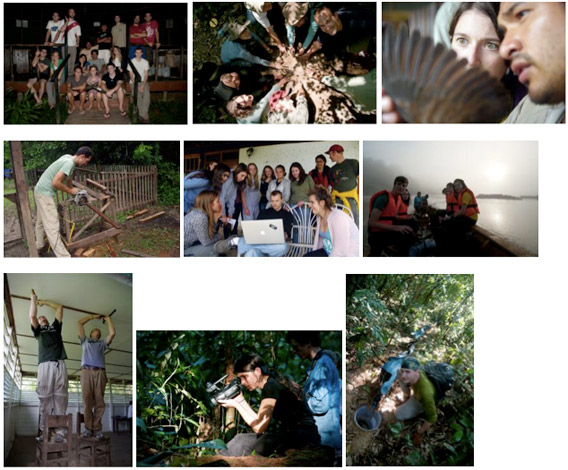
Photos by: David Johnston.
From an early stage we understood that developing research- and conservation-volunteer opportunities would be a significant step, if done properly, due to the labour-intensive nature of the field work and the need to diversify income sources—as grants and donations could not always be relied upon. Fauna Forever’s international volunteers pay contribution fees towards the projects they assist which helps to cover their in-country accommodation, food, transport, and training costs, not to mention some subsidies towards the inclusion of local Peruvian volunteers. Volunteers return home with a number of useful skills, extreme fieldwork experience, new friends and contacts, promises of recommendation, and a personal and unbiased knowledge of frontier life and the challenges of conserving the Amazon’s forest and biodiversity.
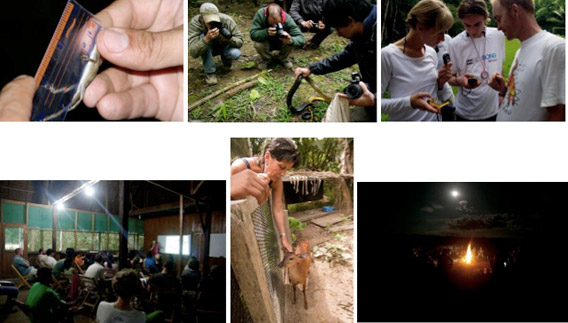
Photos by: David Johnston.
With the help of our much loved volunteer taskforce (some of whom have stayed on to work for us), local allies and partners, and funding organizations, it has also been possible for us to go on to analyze the economic value of wildlife-rich rainforest, the impacts and benefits of multiple economic and cultural activities and historical policy decisions at distinct points in time, and to contribute our data and arguments to the ongoing debates about how best to use and conserve the Amazon rainforest.

Photos by: David Johnston.
From our central monitoring work and internal field methods training programs have sprung more specialized workshops, more tie-ups with organizations and individuals that share our research, conservation, education and social welfare goals, as well as more initiatives that will endeavor to respond to changing realities on the ground, including helping to re-grow forested corridors across the Interoceanic Highway and associated agriculture- and gold-mining-dominated landscape either side of the tarmac, not to mention implementing strategies to control stray dog populations in and around Puerto Maldonado in an attempt to reduce the risks of disease transmission between domestic and wild animals (which has been found to have affected some wild species in the past).
With the Bird Ringing Forever workshops, we have teamed up with the Centre for Ornithology and Biodiversity (CORBIDI) to bring up-and-coming Neotropical bird researchers (and some general bird aficionados) an opportunity to learn mist netting, bird identification, handling, measuring, and ringing/banding techniques from seasoned experts.

Photos by: David Johnston.
With Untamed Photography (previously Foto Forever) workshops, we have teamed up with experienced nature photographers willing to share their years of on-location and photo-editing knowledge used to capture and bring unforgettable imagery into the public domain. We believe strongly that, given the visual creatures that we are, that good quality imagery is important for maintaining the relationship between people and nature, especially in the increasingly urbanized societies of today.
Untamed Photography Promo from .relevant films on Vimeo.
Mongabay: In the last several years Peru has suffered violations of reserves by large industries. In 2009 indigenous protestors against oil development and the Peruvian military personnel clashed leading to causalities on both sides, and more recently gold mining companies have clashed with locals and activists in the Madre de Dios region. It seems that as minerals and fossil fuels become scarce and expensive, indigenous people and wilderness regions are quickly becoming conflict hot-spots. What measures do you see as vital for the protection of these regions and their inhabitants in the near future?
Chris Kirkby: It is certainly true that as Madre de Dios and its natural resources are increasingly opened up by market forces (helped along by large continental-scale infrastructure projects such as the Interoceanic Highway), that pressure is now mounting on areas and peoples that were previously, for geographic or economic reasons, largely un-accessible. A fast-growing human population, fueled by immigration from poor rural areas in the Andes, a high gold price (a result of economic turmoil internationally), not to mention energy projects (oil, gas, hydroelectricity) is pitting one group of land users against another in a series of battles to control land and thus above- and below-ground resources, even as land-use zoning strategies are being slowly implemented to help establish clear property rights over the landscape.
In Tambopata, oil companies have come and gone over the last three decades. In 2007, some members of the Peruvian Congress attempted to de-gazette a portion of the Bahuaja Sonene National Park to make way for oil and gas extraction, reserves having been discovered there back in the 1980s and 1990s. A swift lobbying campaign by conservation groups and ecotourism operators, not to mention significant support from civil society groups and the general public quickly put a stop to the plans. Dealing with proposed government action that would have benefitted a multi-national company or two has proved much easier than dealing with a history of government inaction concerning the illegal exploitation of forests and waterways by artisanal gold miners.
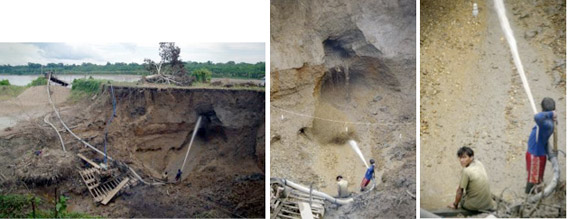
Placer Gold Mining on the Banks of the Madre de Dios River. Photo by: David Johnston.
This again is typical of a low governance region such as this, where it is very challenging for the State and civil society groups to get good laws respected. The lack of State finance (i.e. incentivized personnel armed with the right equipment and know how), and long-term planning mechanisms, not to mention corruption by State officials, along with high profit margins from rapid, illegal, and unsustainable extraction of valuable resources, makes the process of gradual, orderly, and perhaps economically efficient (from a private and social cost-benefit point of view) development a difficult task at best.
Only recently, and after a general election and a change of priorities, has the government decided to begin sorting out the mining problem in this area of Peru, and only then with police-, army-, and airforce-supported operations costing millions. For the time being the miners have been forcibly moved out of the buffer zones around the reserve and National Park, but pressure is mounting around other protected areas and indigenous lands.

A Local Woman Sits in Disbelief as She Looks Out Over the Illegal Gold Mining Hole, Armed Police in a Raid on Illegal Gold Miners. Photo by: David Johnston.
We fully support and frequently engage with the efforts of local and national civil society groups that are hard at work trying to change the status quo and fighting the ideological battles that must be fought and won if wild nature is still to be found when the majority of Peruvian society are rich enough to appreciate and conserve it from an ethical point of view and for its intrinsic values alone.
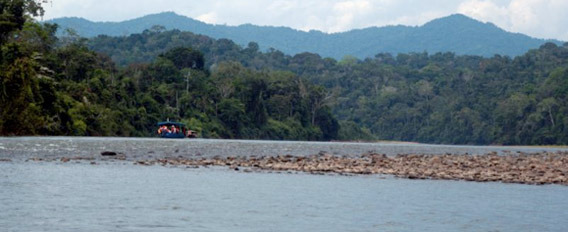
Upper Tambopata. Photo by: David Johnston.
Related articles
New rainforest and indigenous reserve established in Peru
(02/07/2012) On February 4th, the Peruvian government and a small indigenous group created a new Amazon reserve, dubbed the Maijuna Reserve. Located in northeastern Peru, the 390,000 hectare (970,000 acres) reserve is larger than California’s Yosemite National Park and over three times the size of Hong Kong.
Photo of the day: super-abundance of life found in Amazon park
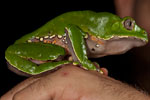
(02/02/2012) Surveying a little-explored park in the Peruvian Amazon has paid off in dividends: researchers with the Wildlife Conservation Society (WCS) have cataloged 365 species that had not yet been recorded in Bahuaja Sonene National Park. The never-before recorded species included two bats, thirty birds, and over two hundred butterflies and moths.
Saving the world’s biggest river otter
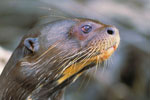
(01/30/2012) Charismatic, vocal, unpredictable, domestic, and playful are all adjectives that aptly describe the giant river otter (Pteronura brasiliensis), one of the Amazon’s most spectacular big mammals. As its name suggest, this otter is the longest member of the weasel family: from tip of the nose to tail’s end the otter can measure 6 feet (1.8 meters) long. Living in closely-knit family groups, sporting a complex range of behavior, and displaying almost human-like capricious moods, the giant river otter has captured a number of researchers and conservationists’ hearts, including Dutch conservationist Jessica Groenendijk.
